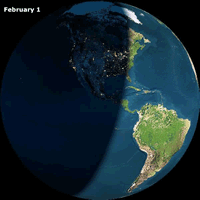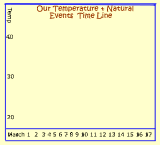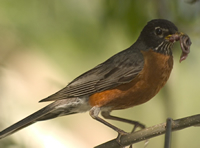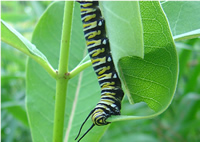|
Signs
of the Season:
Observations for
March 2011 |
||||||||||
| March is a time of dramatic change. Make a temperature timeline this month. Record each day's high, low, and average temperatures and add all the signs of spring you notice. Spring officially begins on March 20, but when does it begin unofficially for you? Think about it. Send us your sightings. Keep your eyes and ears open and follow along on spring's adventures with Journey North!
|
|
|||||||||
| March and April are a busy time for animal families. Baby squirrels are born during this time.
What
do you see today, on the first of March? Here's a sampling of recent
reports:
|
||||||||||
| What's
Happening to the Sunlight? |
||||||||||
|
Are you tracking sunrise and sunset times, daylength, or shadows in your hometown? What have you noticed? Some important things have changed since the last update. In Minnesota we have gained 57 minutes of sunlight since February 1. How is your daylength increasing? We continue to follow the angle of the sun across the Earth as winter turns into spring in the Northern Hemisphere, and summer turns to fall in the Southern Hemisphere. Imagine you're in space looking at Earth on the morning of March 1. Here's what you'd see! |
||||||||||
|
||||||||||
| Spring Fever: Build a Temperature Timeline | ||||||||||
March is a time of dramatic change. Keep a record of these changes with a temperature timeline. Observe each day's temperatures and any new signs of spring. Record them all on a timeline in your classroom or hallway. Think about cause and effect. How will the timing of one event affect another? Will earthworms surface and robins arrive at the same time; cherry blossoms and honey bees; milkweed plants and monarch butterflies? What other events in nature are interconnected? How do the temperatures outside influence spring’s awakening? Think: Why is it important to study the timing of natural events (also known as phenology)? Add your ideas to this list.
|
||||||||||
|
||||||||||
| Resources to Explore | ||||||||||
|
|
|||||||||
| Signs
of Spring for April A reminder will be posted on April 1, 2011 |
||||||||||













